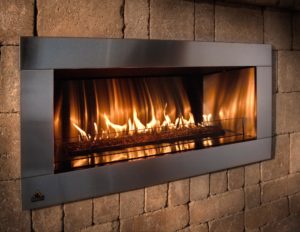 The fireplace is an intelligent tool to keep the space in the house to keep warm. As it will be involved fire, safety aspect must be taken seriously. For the aspect of safety of fireplace is its chimney. Failure to do chimney maintenance and proper cleaning, this will lead to disastrous fire incidence.
The fireplace is an intelligent tool to keep the space in the house to keep warm. As it will be involved fire, safety aspect must be taken seriously. For the aspect of safety of fireplace is its chimney. Failure to do chimney maintenance and proper cleaning, this will lead to disastrous fire incidence.
Chimney can cause a fire in the house from the combination of creosote, a combustible by-product of charred wood, along their walls with the addition of a high internal flue temperature and you’ve got a potentially dangerous chimney fire on your hands.
The build-up of creosote along the chimney lining walls can facilitate the start of a chimney fire. All fires create soot and residue build-up, especially wood-burning fireplaces and stoves. This build-up is caused by the unburned materials in the smoke accumulating along the chimney walls and creating a sticky substance that can easily catch fire. The smoke from the fire contains a substance similar to tar and when the temperatures within the chimney are below 250 degrees Fahrenheit, the substance will condense along the chimney surface. When the temperature drops below 150 degrees Fahrenheit, the substance turns into a dark, sticky substance that is also highly flammable.
Another cause of a chimney fire is due to dirtiness. A chimney that is dirty, blocked or is in disrepair can inhibit proper venting of smoke up the flue and can also cause a chimney fire. The good news is nearly all residential fires originating in the chimney are preventable.
How to install chimney
The best way to avoid a house fire caused by the fireplace or chimney is to hire a professional chimney sweep to inspect for cracks and loose bricks. He’ll also clean your chimney.
Once your chimney has been inspected and/or cleaned and gets the all-clear, you should follow some basic safety tactics when it comes to your chimney and the vicinity of the fireplace or wood stove:
1. Keep Your Fireplace Clear
During the holiday season, it’s tempting to spruce up your fireplace with plenty of decorations. To keep your home safe and to avoid fire hazards, be sure to keep your fireplace clear of festive decor. Stick to decorating your mantel and make sure your stockings and garlands don’t hang too close to the fire. Keep the area near the chimney clear. If you have trees that hang over the house near the chimney, make sure branches and leaves are at least 15 feet away.
2. Install Doors Or A Mesh Screen
If your fireplace doesn’t have a glass door, use a wire mesh screen. To keep ash and sparks inside your fireplace, instead of heading straight through your chimney into your home, install a glass door or a mesh screen for added protection. This addition will not only keep your area clean, but it will also prevent major fire hazards.
3. Avoid “Green” Wood
The wood you burn in your fireplace should be a seasoned hardwood that has been split for at least six months. Avoid burning “green” wood or other paper items like cardboard boxes, toilet paper rolls, or the pine of your Christmas tree. These items create more creosote when burning, filling your home with unwanted smoke. Use seasoned hardwoods that have been split for six months to a year. “Green” wood creates more creosote. Don’t burn your Christmas tree (pine creates more creosote) or be tempted to throw wrapping paper, boxes, or trash into the fireplace.
4. Cap Your Chimney
Hire a chimney maintenance company to come by and cap your chimney before you start using it this season. Chimney caps help keep rain and snow out of your chimney. It will also prevent birds and unwanted critters from nesting inside, leaving you to enjoy full access to your fireplace all winter long. A top that has wire mesh along the sides will keep out rain and snow, birds, and other critters that might be running around on the roof.
If you try to burn too much wood, the chimney can crack and you run the risk of creosote build-up. Burn wood on a grate placed near the back of the fireplace.
Like fire, carbon monoxide can be a deadly threat. Carbon monoxide (CO) is an odorless, colorless gas that can cause sudden illness and death if inhaled.
While carbon monoxide poisoning can result from poorly functioning home appliances and heating systems, it can also come from poorly maintained chimneys. The chimney and chimney connector serve as a furnace’s exhaust system. If debris is blocking the chimney, carbon monoxide can accumulate inside the house.
Perhaps the most important rule of all when it comes to fall chimney maintenance is to install and maintain smoke and carbon monoxide detectors inside and outside of bedrooms. Replace the batteries each season and test the detectors regularly. If the detector is more than 10 years old, replace it.
Remember prevention is the best defense against fire. If there are a wood or coal stove, make sure it is installed at least 36 inches away from the wall. In addition to that, keep combustible materials well away from the stove and chimney connector. It is advisable to place an approved stove board under the unit to protect the floor from heat and hot coals which might drop out. Following a violent storm, earthquake, flood or lightning strike, it is recommended to have the chimney inspected for damage, both inside and out.
